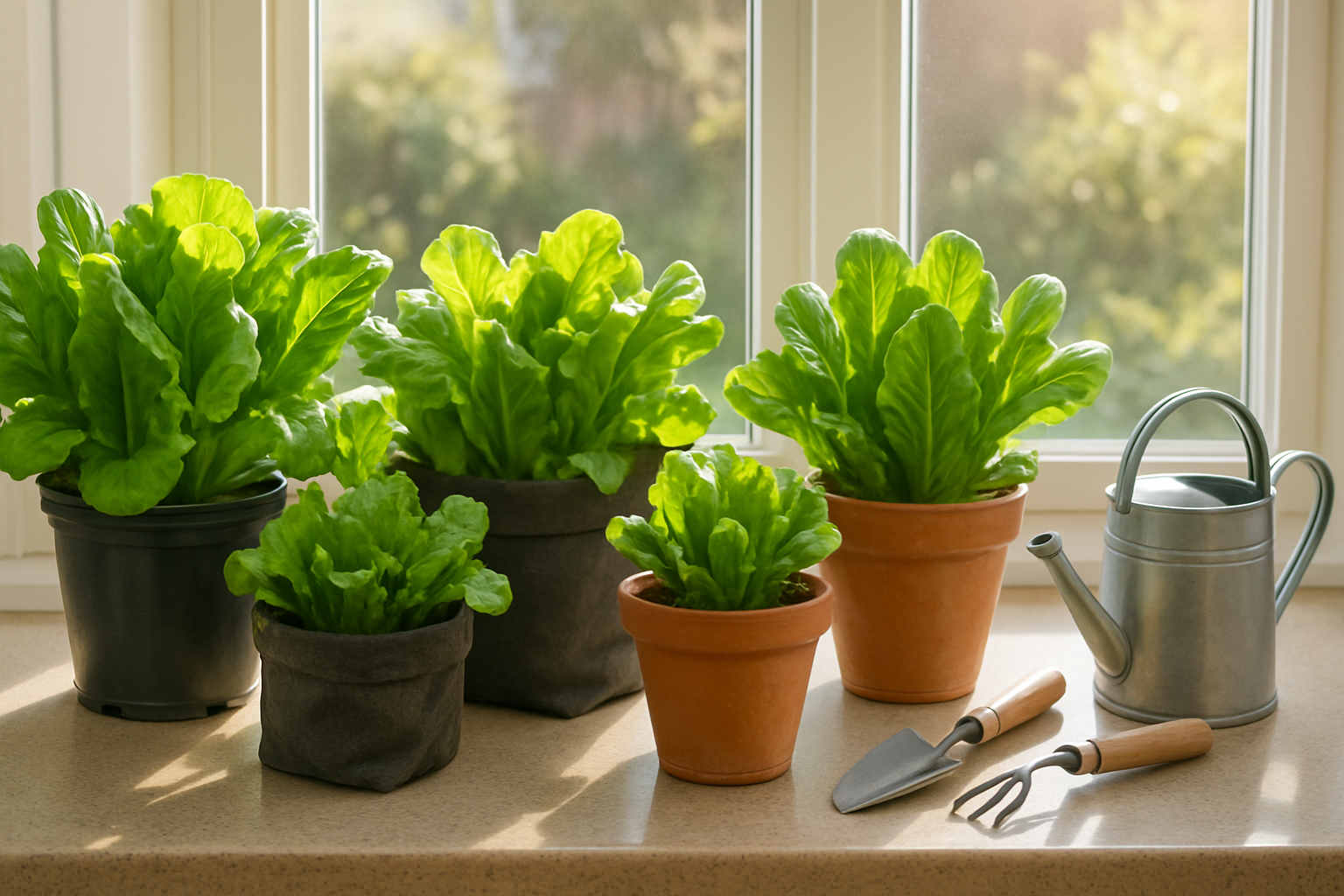Why Grow Lettuce Indoors in Containers?
Growing lettuce indoors in containers offers a variety of practical benefits that make it an appealing choice for many home gardeners. First, you get access to crisp, fresh lettuce just steps from your kitchen, ensuring the best flavor and maximum nutrients. Unlike store-bought greens, your homegrown leaves don’t spend time in transport or on shelves, so they retain their natural taste and crunch.
Convenience is a big factor—containers fit on windowsills, countertops, or small shelves, making them ideal for apartments or homes without traditional garden space. Plus, you control the environment by adjusting light, humidity, and temperature to suit your plants, avoiding harsh outdoor weather that might stunt growth or cause crop loss.
Indoor container gardening also drastically reduces exposure to outdoor pests like slugs and aphids, minimizing the need for chemical pesticides and making organic growing easier. You aren’t limited by the seasons either: with a consistent source of light, such as from a sunny window or grow lights, you can harvest lettuce year-round regardless of outside conditions.
This setup is perfect for busy people or anyone with limited outdoor access who still wants to enjoy fresh greens. Even beginners will find success, as lettuce grows quickly and reliably in containers when given basic care and attention.
What to Look for in a Container for Indoor Lettuce
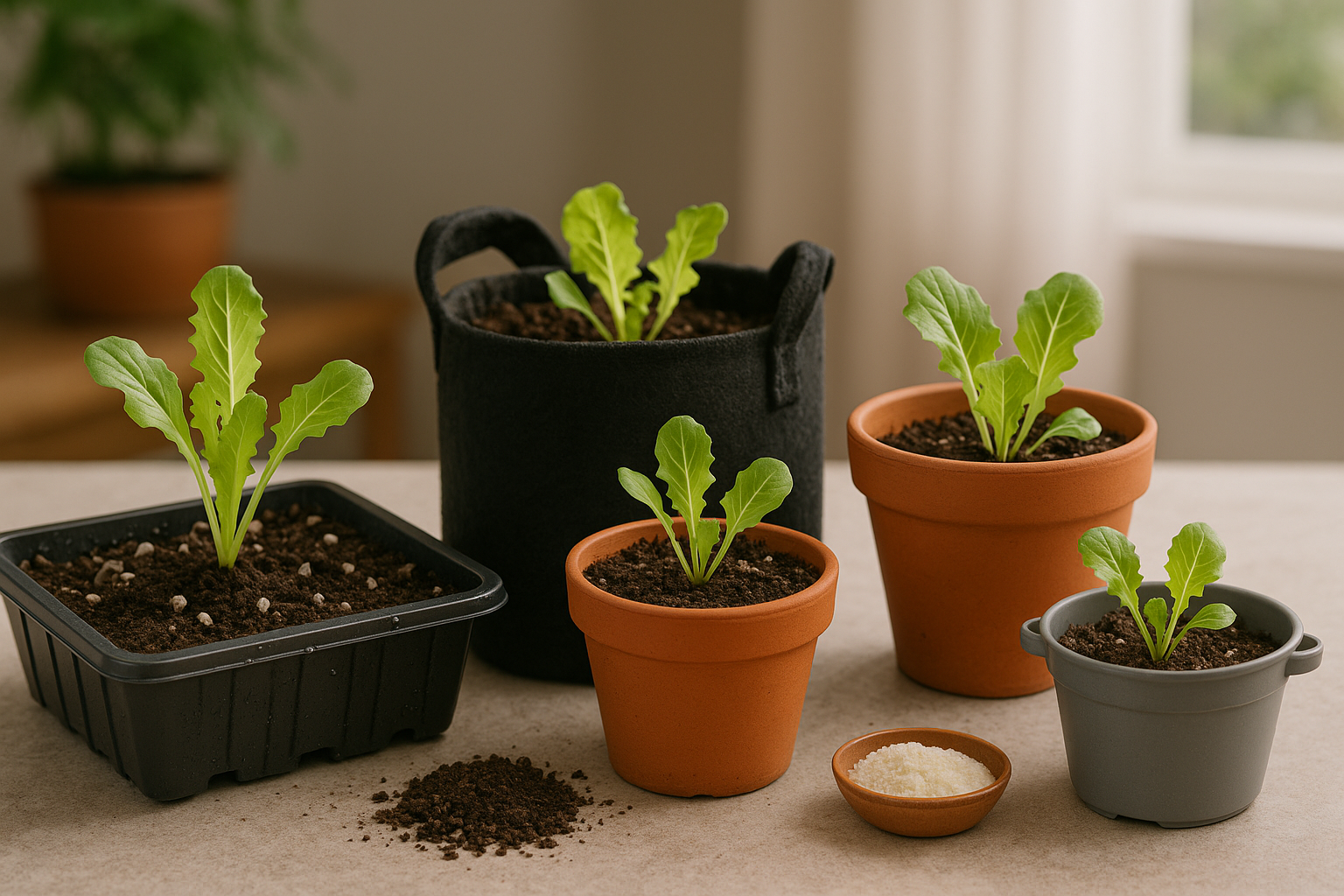
Choosing the right container is crucial for growing healthy indoor lettuce, and several features make a big difference. First, prioritize containers that are at least 6 to 8 inches deep and wide enough to give roots space. Shallow containers can stunt growth, so don’t skimp on depth—especially for leafier varieties with larger roots.
For multiple plants, wider planters or long troughs work well. Each lettuce head typically needs about 6 inches of space, so consider your variety (loose-leaf types can be closer than crispheads) and how many heads you want to grow.
Good drainage is essential to prevent soggy roots—look for containers with multiple holes on the bottom, or drill your own if needed. Material is another important factor: choose lightweight plastic or fabric pots for easy moving, especially if you’ll be chasing optimal sunlight in your space. Ceramic or clay pots work fine if you’re prioritizing durability or aesthetics.
If mobility matters, opt for containers with built-in handles or place pots on trays or wheeled caddies. Finally, make sure the total container volume is at least 1–2 gallons per plant for large varieties. For baby lettuces or cut-and-come-again harvesting, you can use shallower, wider trays.
Quick tip: repurposed storage bins or window boxes can make surprisingly effective lettuce planters—just add holes and you’re set!
Top Types of Containers for Growing Lettuce Indoors
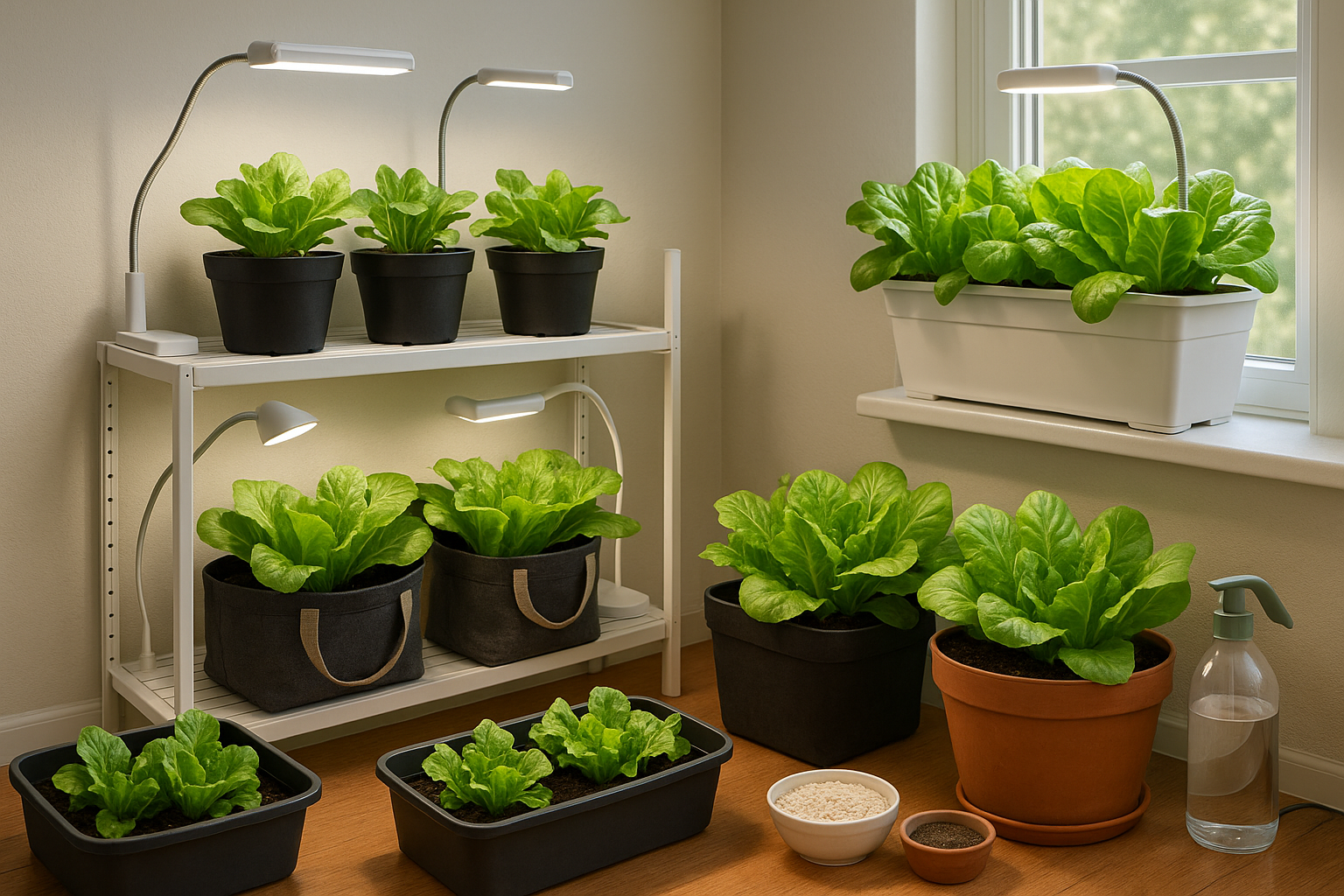
When growing lettuce indoors, choosing the right container can make all the difference in achieving healthy, crisp leaves. Clay or terracotta pots are a classic choice; they look great and provide excellent air circulation to lettuce roots. However, they tend to dry out quickly and require frequent watering, which can be challenging for forgetful gardeners.
Plastic pots or trays are inexpensive, lightweight, and often come with drainage holes. They retain moisture better than clay pots but can get warm near sunny windows, so it’s important to monitor soil temperature for optimal lettuce growth.
Grow bags, made from breathable fabric, offer superb drainage and airflow, reducing the risk of root rot. Their flexibility makes them easy to tuck into small corners or move as needed, perfect for those with tight living spaces.
Steel or recycled metal containers make eye-catching upcycled planters, but they can heat up quickly and may rust over time. To prevent this, try lining them with landscape fabric and ensuring good drainage at the bottom.
Window boxes or railing planters maximize vertical space, ideal for apartment dwellers or anyone with limited room. These containers are especially handy for placing lettuce right in a sunny spot. Just be sure they have drainage holes and are at least 4–6 inches deep, as lettuce roots prefer sufficient soil depth.
Self-watering pots are perfect for beginners or busy individuals, keeping soil evenly moist with minimal effort. However, they require periodic cleaning to prevent mold or algae buildup.
For those just starting out or managing limited indoor space, plastic pots, smaller fabric grow bags, or compact self-watering containers are often the most reliable, easy to maintain, and space-efficient choices. These options help ensure your indoor lettuce thrives all season long.
How to Grow Lettuce in Pots
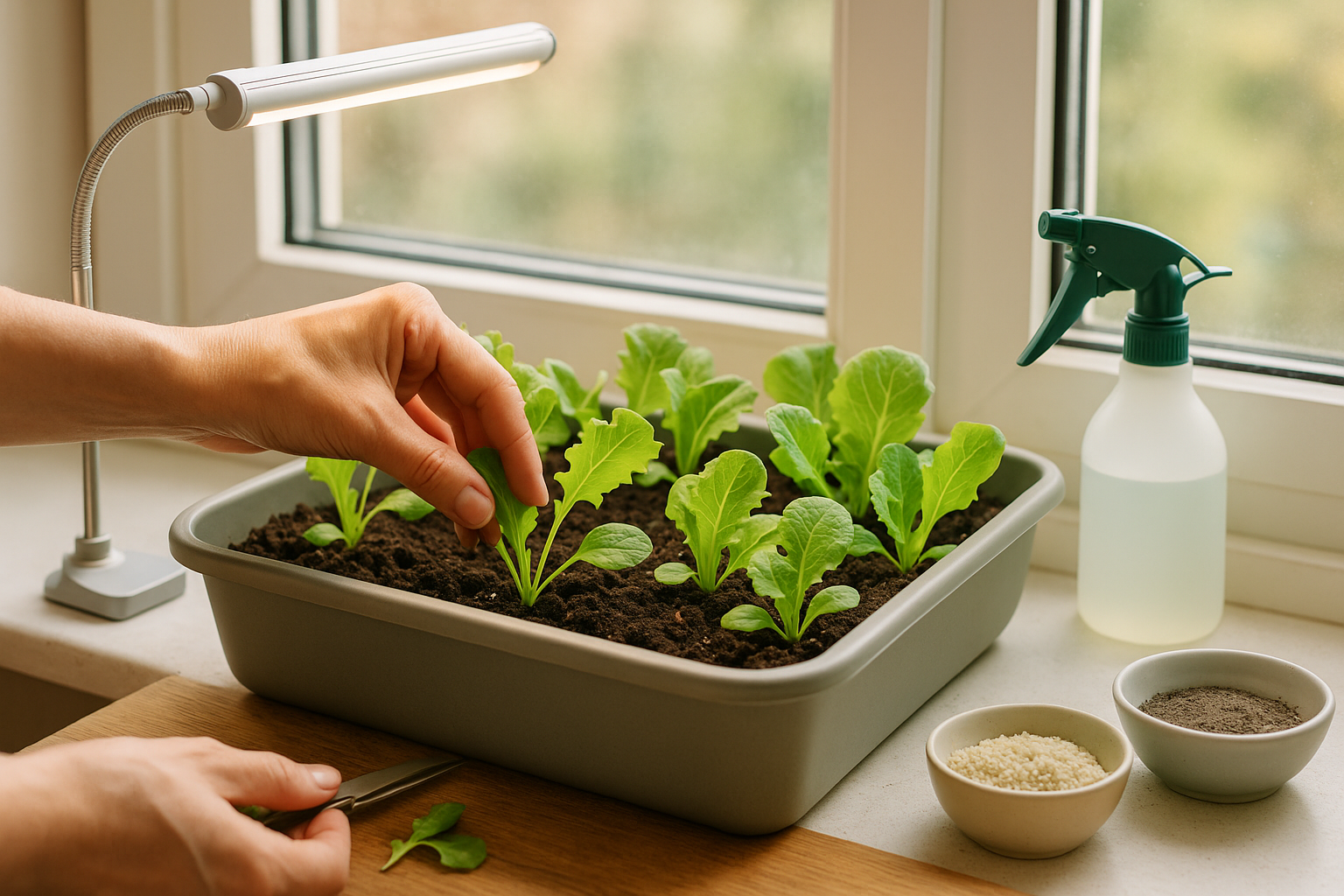
Growing lettuce in pots is a rewarding way to enjoy fresh greens right at home, even if you’re short on space. Start by choosing a container that is at least 6-8 inches deep and has drainage holes; this helps prevent soggy roots, which lettuce dislikes.
For the soil, mix equal parts of good-quality potting mix, compost, and a little perlite or sand to ensure loose, fertile, and well-draining conditions. Avoid using garden soil alone, as it can compact and hinder root development.
When sowing seeds, sprinkle them thinly, aiming for about one inch apart—overcrowding can limit airflow and lead to weak, spindly plants. Once seedlings appear, thin them out so the remaining ones have space to grow—ideally, 4-6 inches between each plant.
Water your lettuce gently but regularly; the soil should stay consistently moist but never soggy. Check daily, especially in warm rooms, and prevent overwatering by never letting containers sit in excess water—empty any catch trays promptly.
For indoor placement, lettuce loves bright, indirect light; a south- or east-facing window works best. If natural light is limited, consider using a small grow light for at least 12-14 hours per day. Rotate pots every few days so each side receives balanced exposure, encouraging upright growth.
Always watch for signs of poor drainage or overcrowding—yellowing leaves or floppy stems can indicate problems. If you spot any of these, try repotting with a lighter soil mix or thinning plants further.
With the right setup and simple care, you’ll enjoy crisp, homegrown lettuce in just a few weeks—perfect for salads and sandwiches straight from your windowsill.
Caring for and Harvesting Your Indoor Lettuce
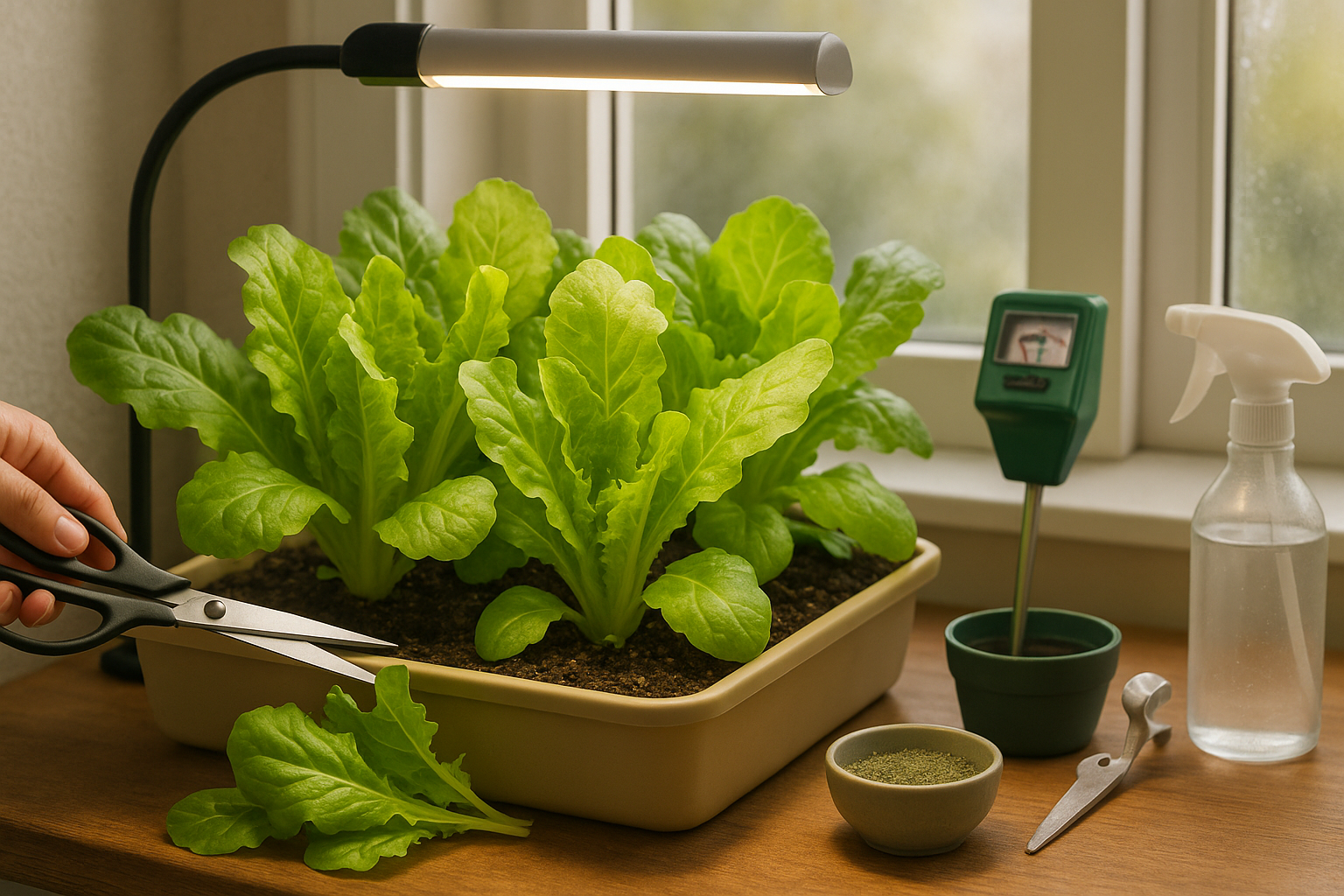
Keeping your indoor lettuce healthy starts with daily monitoring of its environment. Make sure the soil stays consistently moist but not soggy—lettuce roots are sensitive to both drought and overwatering, so check moisture with your finger every day.
Aim for at least 12–14 hours of bright, indirect light. If natural light is limited, a simple LED grow light on a timer can bridge the gap. Lettuce thrives in cooler temperatures, ideally between 60–70°F (15–21°C). If your space runs hot, try ventilating or moving containers to a cooler spot.
As seedlings sprout, thin them out to give each plant about 4–6 inches of growing room for robust leaves. Feed your lettuce every 2–3 weeks with a diluted, balanced fertilizer to encourage steady growth, but avoid over-fertilizing as it can make leaves bitter.
Keep an eye out for common pests like aphids; a quick rinse or a swipe with a damp cloth helps keep them at bay.
For a continuous supply of fresh leaves, start harvesting when the outer leaves reach about 4 inches long. Snip them individually with scissors, always leaving the central rosette intact. This “cut-and-come-again” approach lets your plants keep producing tender greens for weeks.
Frequently Asked Questions About Indoor Lettuce Containers
When growing lettuce indoors, avoid using regular garden soil as it may harbor pests and diseases, and is often too dense for proper drainage in containers. Instead, choose a high-quality potting mix designed for vegetables to ensure healthy root development and reduce potential problems.
Lettuce likes consistently moist soil, but not waterlogged. Water your plants whenever the top inch of soil feels dry, usually every two to four days, depending on the room’s temperature and humidity.
For the best results indoors, select quick-growing, compact lettuce varieties such as ‘Buttercrunch,’ ‘Tom Thumb,’ or loose-leaf types like ‘Red Salad Bowl’ and ‘Grand Rapids.’ These adapt well to container growing and limited space.
While some lettuce can grow near a very bright window, most indoor setups benefit significantly from a full-spectrum grow light positioned a few inches above the plants for 12–14 hours a day. This prevents leggy, pale leaves and keeps your indoor harvest lush and flavorful year-round.
If you’re unsure about lighting, consider a starter kit that includes a grow light, or repurpose a simple LED desk lamp as a budget-friendly alternative.
